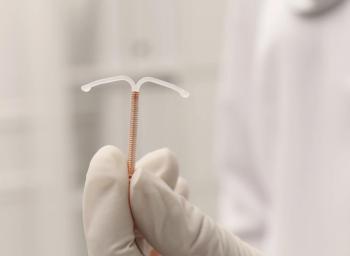
Prevalence of Contraceptive Use in the US
Jenna Beckham, MD, MSPH, FACOG, and Thomas Kimble, MD, provide an overview of the use of contraception methods in the US.
Episodes in this series

Jenna Beckham, MD, MSPH, FACOG: Contemporary OB/GYN Peers and Perspectives titled Expert Perspectives on Contraception Options Where Are We Today. My name is Jenna Beckham. I am a practicing generalist obstetrician-gynecologist, and I practice in Raleigh, North Carolina at WakeMed Health and Hospitals. Today I'm delighted to be joined by Doctor Thomas Kimble and I'm going to let him introduce himself to you all.
Thomas Kimble, MD: Thank you, Doctor Beckham. My name is Tom Kimble and I am Assistant Vice Dean and Associate Professor of Obstetrics and Gynecology at Eastern Virginia Medical School. My background is I'm an OB/GYN and I came here to do my postdoctoral fellowship in contraception and was fortunate to stay on as a faculty member after that.
Jenna Beckham, MD, MSPH, FACOG: Excellent. Today our discussions' going to focus on considerations and recent advances in contraceptive use and selection. We're going to get started with some questions. Tom, just in general, what do you think is the prevalence of contraceptive use amongst folks in the United States these days?
Thomas Kimble, MD: According to the most recent CDC data and this comes from data that was collected 2017 to 2019, approximately 65% of women in the United States use birth control. Now you see a variety and a change over age groups, about 38.7% of adolescents that would be women ages 15 to 19 use contraception. But decreases steadily as we get a little bit further in the other opposite end of the reproductive spectrum to about 75% of women who are 40 to 49 use contraception.
Jenna Beckham, MD, MSPH, FACOG: It goes up when you get a little bit older I'm sure, I see that in my practice, you do too.
Thomas Kimble, MD: Right.
Jenna Beckham, MD, MSPH, FACOG: What do you think are sort of the division of patients using long-acting versus the shorter-acting methods?
Thomas Kimble, MD: That is interesting because the United States is unique when we compare to other parts of the world. The most common type of birth control in the US is still sterilization. Now when you look at the European Union, for example, it's very opposite. Sterilization is used much less frequently than here they tend to use long-acting reversible methods of birth control. The catchphrase are LARC methods, are implants, and intrauterine devices are used much more frequently in the EU and also in other parts of the world. We've been seeing a shift over recent years where LARC methods are kind of gaining some traction, they have steadily increased in use over the past 10 years. That's exciting. About 10% of people right now use LARCs for birth control. Still, 18% have permanent forms of birth control but we're gaining traction. In the middle then you've got temporary methods like oral contraceptives, that's about 14%.
Jenna Beckham, MD, MSPH, FACOG: And some of those younger patients just are using barrier methods and condoms.
Thomas Kimble, MD: Yes.
Jenna Beckham, MD, MSPH, FACOG: We're still seeing a high rate of those in sort of the younger demographic.
Thomas Kimble, MD: Something that's interesting. Even though we see differences across various demographics, different age groups, we don't see much of a change across different educational backgrounds and status of education. That's encouraging. Because in the past people who had lower education tended to use one method more. But now we kind of see it across the board. So that's a gain.
Jenna Beckham, MD, MSPH, FACOG: And then we're seeing the implants IUDs used comparably. For a period that the implant based on sort of the older version had kind of some negative connotations and patients were a little fearful of it. And now they're seeming to level out I think a little bit more commonly used for the IUD compared to the implant., but still kind of neck-and-neck around the same percentage, obviously, at 10%.
Thomas Kimble, MD: I agree. Some of our larger organizations like the American College of Obstetrics and Gynecology, Society of Family Planning, American Society of Reproductive Medicine. One thing that is really encouraged is using long-acting methods first and first-line. And that has not only helped patients but it's helped us as providers counsel our patients better.
Jenna Beckham, MD, MSPH, FACOG: And we're seeing more I think in mainstream media too even on television commercials and things about advertising. Patients are becoming more aware of them as well.
Transcript edited for clarity
Newsletter
Get the latest clinical updates, case studies, and expert commentary in obstetric and gynecologic care. Sign up now to stay informed.

















